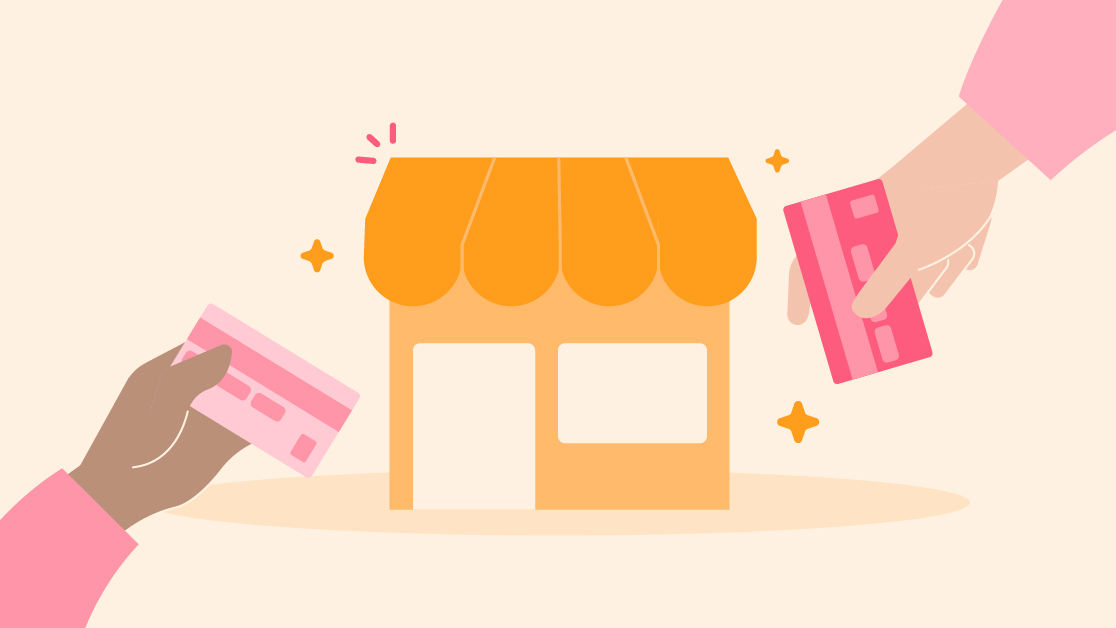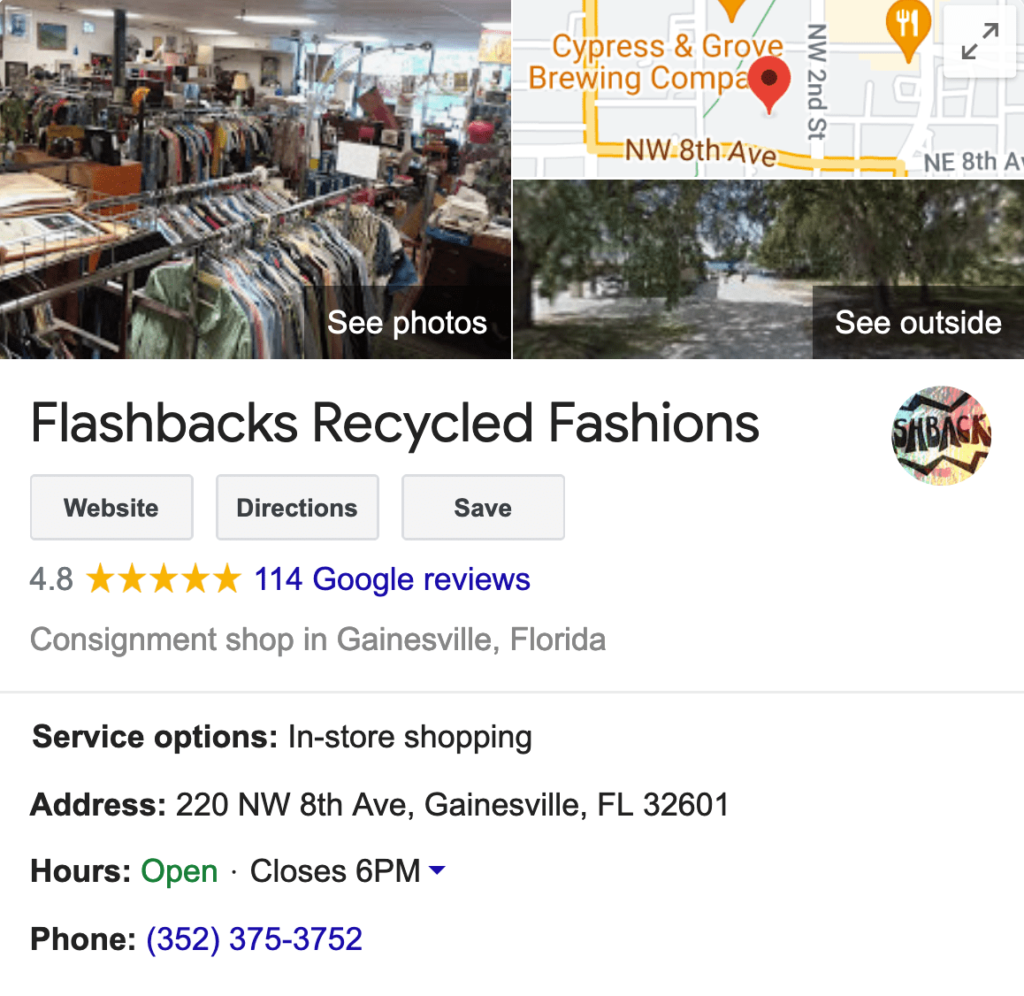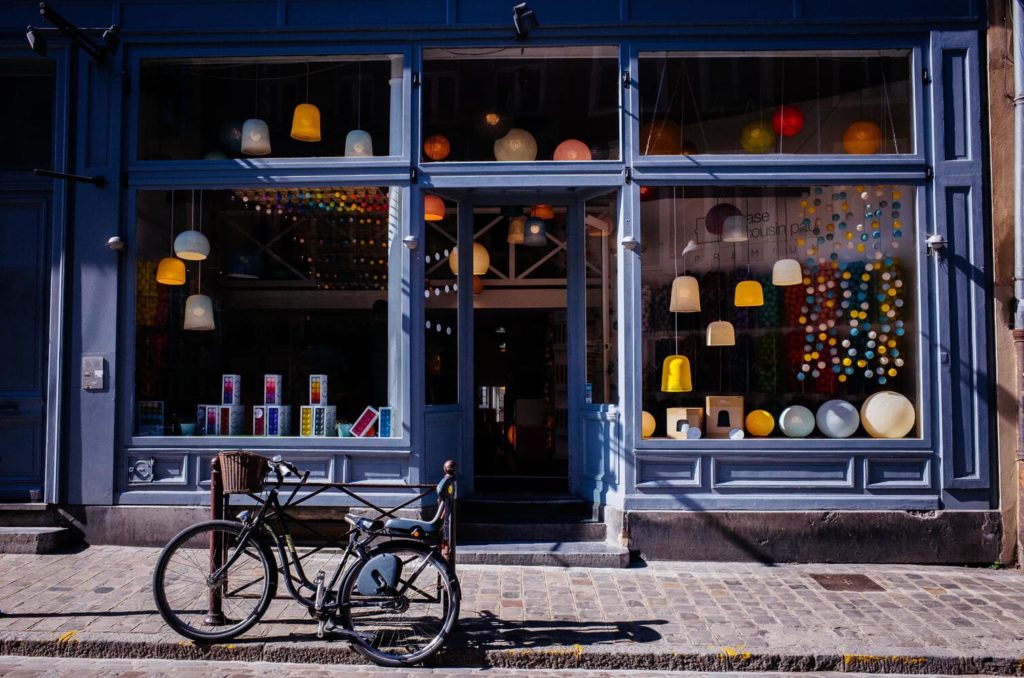Best Ways to Attract New Customers to Your Retail Store
We're certainly not naysayers trying to turn a blind eye to the shifts in the industry. Brick and mortar retail is changing, but it's not going away anytime soon.

We're certainly not naysayers trying to turn a blind eye to the shifts in the industry. Brick and mortar retail is changing, but it's not going away anytime soon.

You’ve probably heard the bad news: every mall is closing, brick and mortar retail stores are dying and e-commerce has taken over the world.
Well…as it turns out, reality looks pretty different than the doomsday retail scenarios that are being talked about.
Don’t get us wrong—yes, e-commerce is huge and getting bigger. But according to Entrepeneur.com, offline sales are still 10 times bigger than online sales. There’s no doubt that online shopping is convenient, but there a few things that online stores can’t deliver.
The most obvious one is a physical, in-store experience. Consumers prefer to be able to see and touch products before they make purchases. You can’t feel how soft the sweater you’re thinking about buying is through by touching your computer screen.
There are other inconveniences that allow brick and mortar retail to prevail: According to a 2018 study conducted BigCommerce and Square, 18% of US consumers hate paying for shipping, 15% say they hate waiting to receive their product, and 12% think the product return process is difficult when shopping online.
These are all pain points for consumers—and opportunities for retail business owners like you. When you’re seeking marketing strategies to help you attract more customers to your shop, consider these points of friction.
By understanding what people don’t like about the online shopping, you can provide an unforgettable in-store experience, thus building customer loyalty and your store offers a level of service that e-commerce retailers can’t match. By the end of this article, you’ll understand how to set your retail store up for success, protect yourself against online competition, and bring in more traffic.
We’ll break things down into three steps: attracting more customers, providing an exemplary experience, and retaining customer loyalty. Let’s go ahead and talk about the first step.
Cross-selling and up-selling are necessary for retailers who want to grow sales. But having a steady stream of customers is equally as important. Here’s how you can achieve that:
1. Buy online, pick up in store

We already mentioned that customers don’t like having to pay for shipping. Giving them the option to pick up in store alleviates that tension, and helps your store compete with other e-commerce shops that don’t have a physical location. In the cases where a customer is unhappy with a product after seeing it in person, they’ll be able to return it right away.
There’s another benefit to allowing customers to order online and pick up in store: they may decide to add more to their “cart” when they get there. Impulse buys are less frequent online. But when a customer has the chance to touch, feel, and see a few more items, they’ll be more likely to spend more money.
It’s for this reason that you may want to offer an incentive beyond just free in-store pick up. For example, you could offer your customers 10% off their purchase if they pick up in store. Customers will appreciate the savings, and it’ll give your staff a chance to make personal connections which will lead to more repeat customers.
2. Match online prices (or value)

33% percent of consumers price match their products online while shopping in store. This means that if the product is more expensive at your location, you risk your customers walking out empty handed.
Of course, it’s nearly impossible to compete with Amazon’s margins. If it would cut too deeply into your profits to offer a price-match guarantee, you can consider providing other incentives instead.
For example, you could offer a free warranty, customer support, or 30-day money-back guarantee instead. Whatever you decide to offer, just make sure it provides more value than the money your customers would be saving by purchasing your product from an online competitor’s website.
3. Provide inventory information online

Remember that BigCommerce report we mentioned earlier? 45% of the respondents made a purchase online in the six months prior to answering the survey. When you consider that over 3,000 digital consumers were polled, that’s a massive amount of online sales.
But here’s the really interesting part: they spent 69% of their discretionary income each month in-store. So what does all this mean?
Most consumers want to be able to shop both online and in-store. It’s no wonder that so many online stores are experimenting with retail pop up shops.
This process of selling across physical and digital channels is called omnichannel retail. If your retail business isn’t online yet, it’s essential that you dedicate the resources toward becoming omnichannel. It will take time, money, and effort—but will be significantly easier than a digital-first store trying to open a physical location.
One of the main reasons it’s important for your store to be omnichannel is that on-the-fence customers won’t visit your store unless they’re positive the item they want will be there. And they definitely don’t want to wait on hold while your staff checks. All the major retailers are doing this: Target, Ikea, Walmart.
You don’t have to be a retail behemoth to implement this tactic. Marketing automations made possible through Zapier let even small businesses easily connect their website and inventory management software.
SimpleTexting Tip 💡 If an item is out of stock, give your customers the ability to receive a text when it’s back!
4. Send out promotions via SMS

Have you ever been followed by a pair of shoes that you looked at weeks ago? Or a mattress that you considered buying last year? This is called retargeting, and it makes it difficult for customers to forget the online stores they recently visited. This can be done with SMS remarketing, social media ads, or via other platforms. If your retail business takes an omnichannel approach, you can (and should) try retargeting ads. They may be right for you.
However, users are beginning to scroll right past these ads. And as for emails? Less than 23% are opened. If you have an enticing promotion, the easiest way to ensure it gets read it to share it by text message. After all, 99% of texts get read.
Create a VIP text message list for your store, and send out occasional messages offering customers a deal if they come in to shop. Not sure where to start? Check out this blog post about attracting customers to your retail store with coupons.
5. Optimize your website for local searches
A 2017 survey of over 2,000 people found that the most common way consumers find out about a small business for the first time is through online research. Only 8.4% said they usually found out about a business by walking into the store.
This means it’s absolutely necessary for your retail store to do everything it can to appear in online searches. Even if most people hear about you through word-of-mouth, 36.4% of people said they often check out stores online prior to visiting them in person.
Here are a few ways you can optimize your website for local searches:

All of these tips will signal to Google that your page is valuable. Google doesn’t inherently value one retailer over another. They just want to satisfy users. It’s up to you to prove you can do that.
6. Host events
Shopping isn’t just transactional. Sure, the end goal is to purchase something, but many shoppers see it as entertainment. Capitalize on this by hosting events or workshops at your store.
If you need some inspiration, take a look at Apple. They bring in experts to their stores to lead workshops on topics ranging from video and photography to music, coding, art, design, and many more. Known as “Today at Apple” these events create a space where customers can connect in a more personal way with the brand.

Of course, you don’t have to be the next Steve Jobs to host a fun event at your store. If you’re a clothing store, for example, you may want to host a fashion show where members of the community can participate. A record shop could try a record-swap day where music aficionados bring in the vinyls they don’t listen to and trade them with others.
These high-quality and interactive offline experiences protect you from online competitors. They allow you to become part of your customers’ lives. Whatever event you decide to host, make sure to promote it on social media, garner press from local publications, and send out a text to the VIP texting list we talked about above.
SimpleTexting Tip 💡 An in-store event is the perfect opportunity to grow your text message subscriber list. Try hosting a Text to Win Contest or run a Text to Vote Poll.
7. Increase curb appeal
We mentioned that 8.4% of consumers find out about stores by walking in. Increasing the curb appeal of your retail business is one way to grow this percentage. In just the same way that an online user wouldn’t want to buy from a hard-to-navigate, ugly website, local customers won’t want to enter your physical store unless it feels friendly and is easy-to-find. Do some visual merchandising: put your most attractive (likely to be purchased) items on display.
And at a minimum, make sure your retail business:

8. Create a lounge space (with WiFi)
According to Nielsen, 92% of global consumers say they trust recommendations and information from family and friends above any other form of advertising. Now just imagine if customers not only recommended your business but actually brought others along with them!
Again, as we’ve touched on several times already, the advantage you have over e-commerce stores is your physical location. Use it as more than just a space to house your products. Turn it into an inviting spot where customers (and their family and friends) will feel excited to go.
An easy way to do this is to set aside some space in your store and turn it into a lounge. Add free WiFi, and maybe some coffee and product samples, and you’ll be sure to bring in curious potential customers. Plus, non-shoppers who have been dragged along will have a place to relax, leaving your customers to shop as long as they want. Some people may even come for the WiFi and working space alone, then purchase something while they’re there. (This is a common tactic used by coffee shops.)
SimpleTexting Tip 💡 Use an opt-in keyword to share your WiFi password. Text StacysShop to 833-101-2347 to unlock our wifi password and get 3 texts per month with exclusive offers.
Once your customers are in your store, you have to do everything you can to make them either a) want to come back or b) make a purchase! We’ve covered what you can do to your store and website. There’s one more asset we haven’t talked about: your employees.
1. Introduce yourself by name
Remember, you’re not just selling stuff—you’re selling an experience. And a good customer experience starts the moment they walk in the door. When you visit an online store, a chat pop-up can feel intrusive. But when you go to the brick and mortar location, an associate saying hello and introducing themselves feels friendly. If possible, try to remember the names of your regulars and greet them using their first name when they walk in. This can go a long way in making someone feel welcome.
SimpleTexting Tip 💡 Make your offline and online communication feel personalized. When sending out mass texts, customize them with fields like first and last name.
2. Don’t hover
Your sales team shouldn’t feel like a sales team. Customer’s don’t want to feel pressured into making a purchase. As a rule of thumb, just offer to help one time. If you see someone struggling to find a size, that’s a perfectly acceptable time to offer again. However, don’t hover over your customers. This makes them feel uncomfortable and rushed.
3. Know your products
Another way you can lure your customers away from the competition is to be the most knowledgeable about what you’re selling. Know your products inside and out. Train your entire staff on how to respond to the most frequently asked questions. This will inspire confidence in your customers, and make them feel more comfortable making a purchase. Plus, they’ll know anytime they need to an expert, they can visit your store.
Creating loyal customers matters just as much as attracting new customers. Especially as a small business trying to compete with large retailers. Your marketing efforts can’t stop once someone has made a purchase. Try the below tactics to turn first-time visitors into regulars:
1. Ask for feedback after purchases
Not all customers are ready to tell you what they think in person. On the other hand, they’re very much willing to share their negative reviews online. Use automated feedback forms or surveys to find out what customers think before they share with others.
This serves two purposes. Number one, you’ll get valuable feedback that you can use to improve your business. (If it’s positive, you can ask them to share it on social media or on your Google Listing.) And number two, if the feedback is negative, you’ll have the opportunity to make it right. Unhappy customers are your biggest lesson, and good customer service can help turn them into brand advocates!
SimpleTexting Tip 💡 High open and engagement rates make texting the ideal tool for gathering feedback. Here’s a step-by-step guide on how to ask for ratings and reviews from customers.
2. Communicate with customers regularly
Your customers should hear from you regularly, even if they haven’t visited in a while. Social media isn’t the only place you can interact with your audience, either. If you haven’t already, take the time to build an email list.
Even if you don’t have the time to dedicate to a weekly newsletter, sending one out once or twice a month is a good start. A well-crafted newsletter shouldn’t just promote your store. Yes, you should show off what new products you have in stock, but make sure you also share relevant content that your target audience with fill helpful, or entertaining.
A local bookstore, for example, could create a newsletter with literary reviews, author interviews, and book recommendations.
SimpleTexting Tip 💡 If you have a list of text message subscribers, you can turn them into email subscribers with text to join.
3. Create a loyalty program
A survey of over 3,000 people found that 80% are more likely to shop at stores that offered some type of loyalty program. The strategy takes some careful planning but can pay off big time. In order for your loyalty program to work, it needs to go beyond just punch cards and offer 10% off on the bottom of your receipts.
Take The North Force, for example. Customers earn points with the VIPeak program and redeem rewards like a mountain climbing adventure in Nepal. We know—your small business probably can’t afford to start flying customers across the world. But with a little creativity, you can create some interesting incentives too! Get into the headspace of your customer and think about what they would want.
Let’s take a look at the three examples we’ve talked about: book, record, and clothing stores. The bookstore may offer free tickets to a writing workshop. A record store could give away a concert ticket after a certain amount of purchases. The clothing store could give a customer exclusive access to a new selection before it hits the shelves. All of these are fairly inexpensive, but could all motivate a shopper to visit a brick and mortar store instead of an online retailer.
We’re certainly not naysayers trying to turn a blind eye to the shifts in the industry. Brick and mortar retail is changing, but it’s not going away anytime soon. Your company needs to adopt an omnichannel approach and provide a buzz-worthy in-store experience to survive. We hope this article has provided you with some useful advice to help you grow your customer base. Every day we help thousands of large and small businesses reach their audience. Want to see how easy it is to bring in more customers using text message marketing? Sign up today for a free, 14-day trial of our platform.
Alfredo is SimpleTexting's brand manager. He's passionate about using his 10+ years of marketing experience to help small businesses grow.
More Posts from Alfredo SalkeldInstead of building an expensive online store, Yesterday’s Books text-enabled its landline number. Now it uses SMS to help manage customer orders.
ReadNeed some help starting meaningful conversations with your retail customers? Learn how to acquire, nurture, and retain leads with these 17 text message templates.
ReadStart a text marketing campaign or have a 1-on-1 conversation today. It's risk free. Sign up for a free 14-day trial today to see SimpleTexting in action.
No credit card required